‘I think that I may without vanity affirm that I have ‘seen the elephant’’ – Louisa Clapp, letter from California, 1849
Early emigrants struggling to convey the tribulations of their overland journey settled on the phrase ‘seeing the elephant’ as a shorthand for the horrors they had suffered on their way west. To state that you had ‘seen the elephant’ was to say that you had experienced the very worst of the deserts, mountains, heat and disease that awaited travellers along the route to California. ‘We began to get a glimpse of the posterior parts of the elephant,’ wrote Samuel Plummer as he crossed the grave-strewn Forty-Mile Desert in Nevada in 1850, ‘from this, he came rapidly in sight and we got view of him, tail and trunk.’ We’d heard the phrase several times at museums and monuments along our route, and it had struck us as little more than an interesting historical curio – until the day we came into Salt Lake City.
Walking through the million-dollar chalets of Park City with small platoons of young mothers in lycra jogging past us behind their prams, it’s hard to believe that it was almost abandoned in the 1950s. It had been a mining town for almost a century by then, but the Depression and a collapse in the value of silver prompted a bold reinvention as an upscale ski resort. As early as the 1920s, silver-miners had been using their underground tunnels and trains to reach the upper slopes of the Wasatch Mountains to go skiing, and in 1963 they opened Park City’s first ski resort, Treasure Mountain, on land that they collectively owned. The state government pitched in with a lavish marketing campaign (‘The Greatest Snow on Earth’) and the town boomed; Park City hosted the Winter Olympics in 2002, and now gets well over half a million visitors a year.
The boom is still going on: we walked through suburban developments so new that the yards of the triple-garaged, 4,000-square-foot houses were still only roughly levelled patches of nettly scrub, their property lines marked by low banks of pinkish rubble. Outside one house, an enormous orange moving van with Virginia plates pulled up as we passed by and began unloading mattresses and boxes of toys. There were expensive SUVs, jeeps and pick-ups in the driveways, but nothing so outré as an actual car. We were – of course – the only people on foot, and had a series of near misses with passing drivers evidently unaccustomed to the sight of human bipeds on their quiet streets. We thought back to our last thousand miles across Nebraska and Wyoming, and decided that we vastly preferred the slack-jawed stares of ranch-hands in their battered trucks to the supercilious smirks of brittle suburban hausfraus, with the steering-wheel of their black Escalades in one hand and a skinny soy latte in the other.
Park City ended abruptly at a final new development, Parley’s Lane (‘Welcome! You Are Just Seconds from the Lifestyle You Have Always Dreamed Of’), where we tutted at the trailing preposition and stepped onto a rutted dirt road leading into the hills. It was immediately and astonishingly steep, and we climbed towards a radio tower high on the ridge above us, bent double under our packs, sweat trickling down our backs. At the top, a faint path led west along the ridge into a dense birch forest. We’d taken perhaps five steps into it when I felt a soft skein of web brush against my legs and then a hard, sharp stab of pain in my thigh. I reacted with my customary sang froid.
“Fuuucccckk!” I screamed. “I’ve been bitten by a fucking spider!” I jumped backwards, nearly knocking Sally over, then sat down by the side of the path to inspect my leg. A numb, plum-sized lump was already rising on my thigh.
The path wound on along the ridgeline through dense, prickly bush, barely wide enough for a person to pass through, dipping sharply into valleys and climbing steeply up the other side, and, worst of all, always running north when we desperately wanted to go west. It dawned on us gradually over the next few hours that we’d gone very badly astray. Several times we came out into clearings with spectacular views across the Wasatch Range, from which even the pale sprawl of Salt Lake City was visible in the far distance through gaps in the mountains. But even after ten miles of walking, none of it came any closer. Then, for the first time in a week, it began to rain.
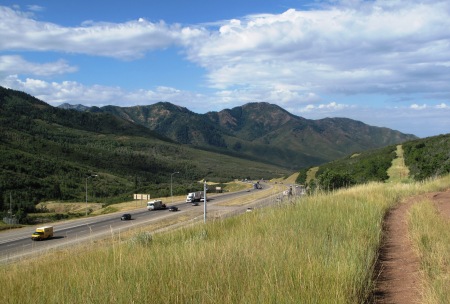
The road not taken: The grassy track middle right would have saved us nine miles (and a spider bite)
Two lean, craggy mountain-bikers appeared over a ridge, and we practically fell on them in our relief to see other humans.
“How do we get to Salt Lake City from here?” we asked, feeling faintly foolish.
“Well,” said one, “just follow the Great Western Trail ’til you hit 65, then just follow that over to Emigration Canyon.”
“Great,” I said. “Where’s the Great Western Trail?” They looked perplexed.
“You’re on it.”
It was not our finest navigational hour. The Trail runs for more than 4,000 miles between Canada and Mexico, and by the time we came out again onto the paved highway, we felt like we’d walked most of them. We consoled ourselves that getting lost in these hills wasn’t entirely without precedent; the Donner Party took an astonishing three weeks to cover their final 36 miles through these canyons into the Salt Lake Valley, at one point resorting in desperation to driving their oxen straight up the sides of hills. We’d planned to cover 27 miles today, but as we sheltered from the rain at a pit toilet by the trailhead, we calculated with horror that we’d added nine miles to that figure with our inadvertent detour. Fit as we were, we’d never had to walk 36 miles in a day before, let alone on mountain tracks. And we didn’t even have any oxen.
Highway 65 was a crazily hairpinning road along the valley floor, where we could often see, a hundred yards below us, a stretch of road that was still a mile away on foot. Signs by the roadside invited us into the forest to walk the original route of the Mormon Trail; although it ran much more directly west towards the city, we’d had more than enough woodland hiking for one day, and stuck to the road. High above us, we caught sight of the precise track we ought to have taken this morning, our error laid out on the hillside for our casual scrutiny during several more hours of walking.
By the time we descended into Emigration Canyon, the route Brigham Young and the Mormon pioneers had taken to reach the Salt Lake Valley in 1847, we still had 15 miles to walk. A burst of grim mathematics told us that if we trudged on without pause, we could just reach the edge of the city before nightfall. There were more cyclists and joggers along this single stretch of road than we had seen in the whole of the rest of America combined, so at least we had ample companionship in our physical suffering.
We walked the last mile out of the canyon and into the outskirts of Salt Lake City in soft evening sunlight. The road widened into a city highway, and ahead we saw the monument that marked the spot where Brigham Young had turned to his party of pioneers and announced “This is the place.” Across the road was the Hogle Zoo, and through the fence we could just make out in the gathering dusk the hindquarters of a huge, grey creature, shuffling across its enclosure to plunge its long trunk into its trough for a drink. We looked at each other in astonishment, but there was no doubt that we had definitely seen it.
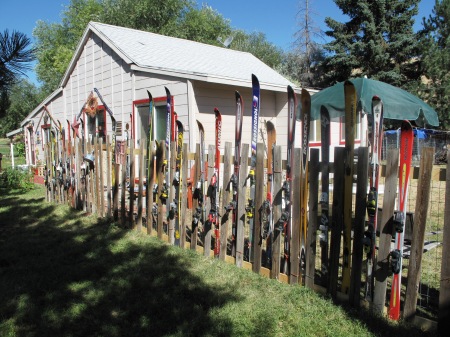
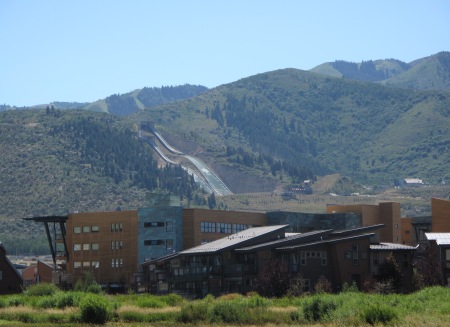
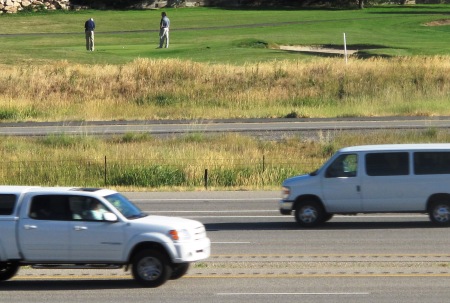
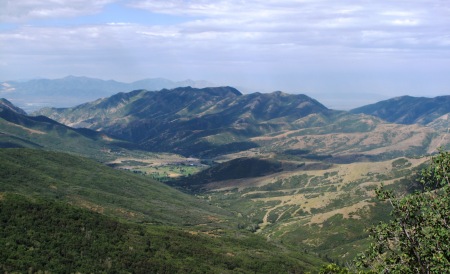
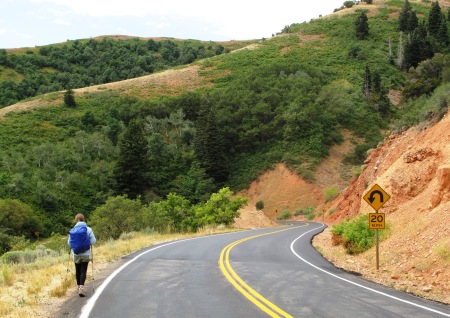
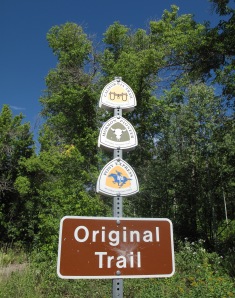
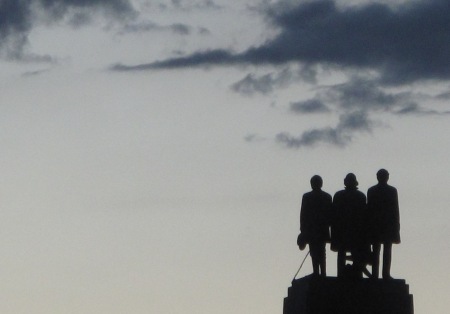
September 18, 2011 at 8:24 am |
silver wardrobe…
[…]Days 172-174/ Aug 25th-27th – Coalville, UT to Salt Lake City, UT: Seeing the elephant « The Walkover States[…]…